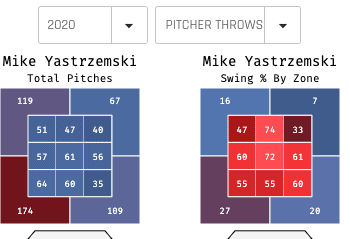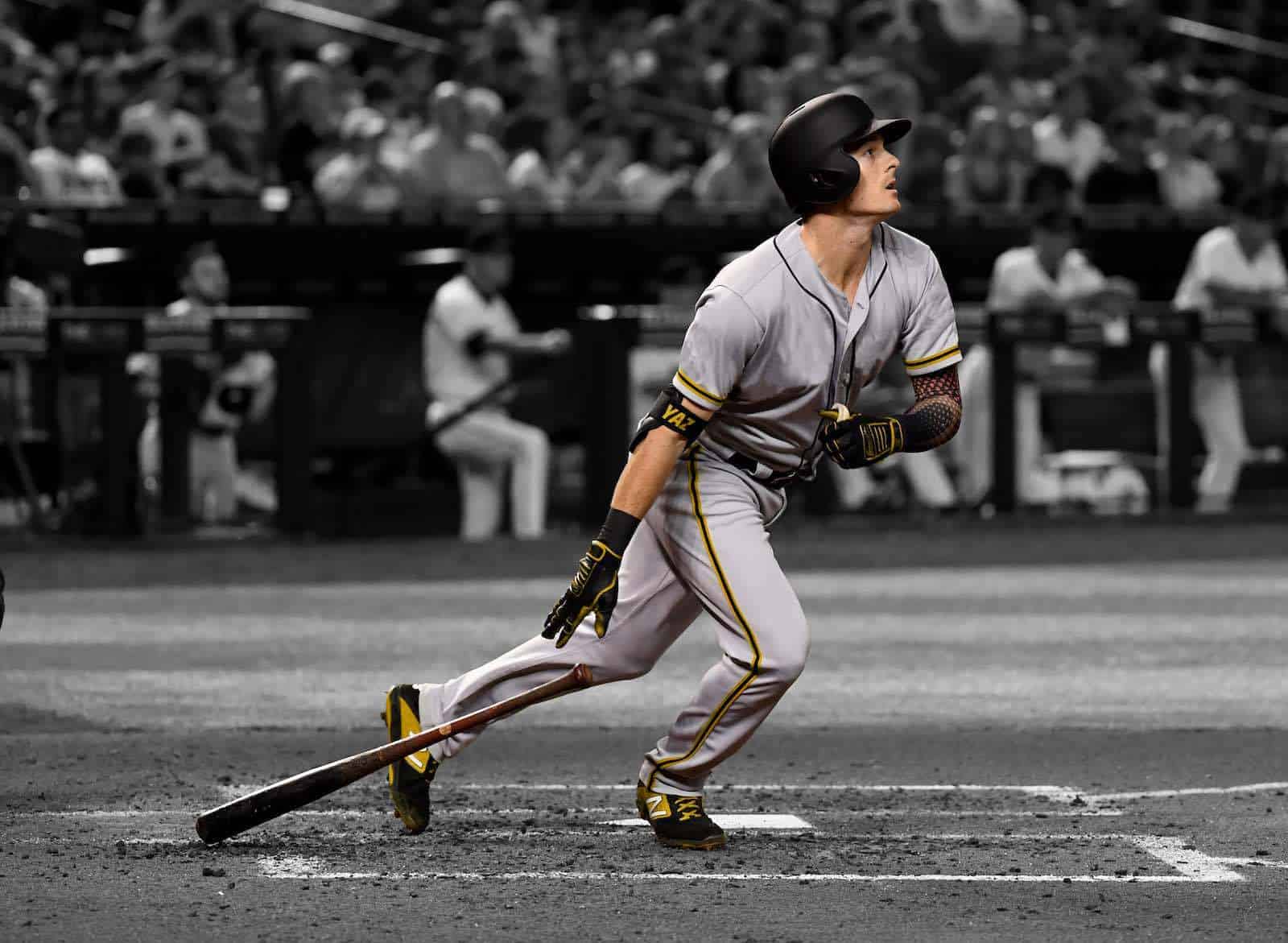When Mike Yastrzemski was called up to the big leagues in 2019, it was a great story for everyone involved. Not only was he the grandson of Hall of Famer Carl Yastrzemski, the man who’s synonymous with the Red Sox and Fenway Park, but he was also a beacon of hope for players that have spent years in the minor leagues without a callup. Drafted in 2013 by the Baltimore Orioles, Yastrzemski spent the next six seasons in the minor leagues, honing his skills at the plate, and waiting for the call. But for reasons that still make even the casual observer scratch their head, that call never came from the Orioles. Instead, it was the new President of Baseball Operations of the San Francisco Giants, Farhan Zaidi, who saw what Baltimore didn’t, and acquired him via trade just before the 2019 season.
The move went largely under the radar, and Yastrzemski wasn’t even on the Opening Day roster. While the season progressed, fans and the front office alike couldn’t ignore what was going on in AAA, where Yastrzemski hit incredibly well, even with the added context of playing in the PCL, a league that is notorious for skewing towards hitters.
After 40 games, his line was an impressive .316/.414/.676, and his wRC+ sat at 154. Finally, Yastrzemski got the call that eluded him in Baltimore, and he was added to the active roster for the Giants. Over the next 107 games, he showed the league why Zaidi acquired him, and proceeded to hit .272/.334/.518 with a wRC+ of 121. He’d solidified his place in the lineup, and was penciled into the starting lineup for 2020.
Unfortunately for everyone, the 2020 season didn’t get off to a smooth start, and spring training was shut down in early March. Without any timeline for restarting the season, players were left to their own devices to stay in shape and game ready. For some, that meant setting up a batting cage in their apartments, but for Yastrzemski, it meant he had more opportunity to get his timing down, and to get his feel for the strike zone in place.
Once the season did finally get underway, Yastrzemski came out on fire. While household name players like Javier Baez and Christian Yelich struggled with their timing and overall offensive output, Yastrzemski hit .423/.531/.808 with a wRC+ of 252 after the first week of games. Perhaps more importantly than what Yastrzemski was hitting though, was what he was letting go by. If 2019 was his true breakout season, 2020 was his ascension into the elite.
While his rookie season was certainly a huge success, the area he struggled in most was his propensity to swing at inside pitches that were out of the strike zone. Take this at-bat against Walker Buehler in 2019 for example.
Although a single at-bat, and a cherry picked one, doesn’t mean anything, his 2019 zone profile illustrates how much of an issue this was for Yastrzemski.

When pitchers were looking to get him to chase, they could exploit his tendency to swing at inside pitches that, even if contact was made, were unlikely to result in good contact. In 2020 however, Yastrzemski changed his approach dramatically, and began to lay-off those same pitches.
This at-bat highlights Yastrzemski’s new approach at the plate, and once again, his statcast profile shows the full picture.

On pitches high and inside, and outside the strike zone, Yastrzemski reduced his swing percentage by nearly 70%. For pitches low and inside, again outside of the zone, while not as dramatic, he cut down his rate by a significant margin, 37.5%. While these changes alone, not swinging at pitches outside the strike zone, would have been enough to fuel some of Yastrzemski’s ascension into the top tier of baseball’s elite, there’s more to it than that. If we take a look at this swing percentage on pitches within the strike zone, specifically high and inside, as well as outside, his change in approach becomes even more apparent.
Anyone that’s played baseball at any level has undoubtedly heard the phrase “swing at strikes and lay off balls”. While that’s still true, the philosophy has begun to shift towards a more nuanced approach, which has coaches telling hitters something closer to, “swing at strikes you can do damage against.” After-all, if a pitcher has the ability to dot pitches in areas of the strike zone that a hitter can’t make meaningful contact with, there’s little reason to swing.
Going back to Yastrzemski’s 2019 season, in the aforementioned parts of the strike zone, (in Stacast these are labeled as Gameday zones 1 and 3), his batting average was .171, his slugging percentage just 0.371, and his wOBA only .233. In 2020, while his offensive prowess on these same pitches didn’t improve, Yastrzemski’s frequency at swinging against them decreased dramatically. This is the key factor for him, and any hitter for that matter. Nobody can completely stop chasing pitches they can’t hit well. With just a fraction of second to make a swing decision, even hitters like Mike Trout are going to offer at pitches that in hindsight would have been smart to lay-off. But to be able to limit the frequency at which it happens is what can lead to significant improvements at the plate; and for Yastrzemski, this is exactly what happened.
In 225 plate appearances in the shortened 2020 season, he hit .297/.400/.568 with a wRC+ of 160, good for the 10th best value across MLB. While his OBP helps tell part of the story, looking closer at Yastrzemski’s walk rate again details just how his new approach at the plate yielded incredible results. In his rookie season, his walk rate was 7.8%, but in 2020, it rose to 13.3%, a year over year increase of 70.5%. No matter where you look, Yastrzemski’s offensive improvements this season are extraordinary, but most importantly, sustainable. His success wasn’t fueled by random variation or luck, but a conscious change and concerted effort to focus on parts of the strike zone that he can do damage against. As 2021 approaches, Yastrzemski is no longer an unknown, and needs to be recognized as one of the top offensive talents in the game.






